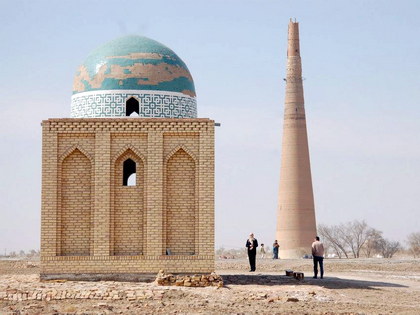Balkanabat, Turkmenistan
Tours, Attractions and Things To Do in Balkanabat
Balkanabat is a modern city in Turkmenistan with population about 88,000 people. The city is situated in the west of Turkmenistan at the southern pediment of the Big Balkhan ridge. Not far from the city there is an airport and 13 km to the north-west from the city there is Turkmenbashi port
Balkanabat was founded in 1933, upon discovery of major oil deposits. In 1946 the township obtained a city status. Initially the city’s name was Nefte-Dag or Nebit-Dag (Oil Mountain). In 1999 the city changed its name for Balkanabat. In modern times the city is actively being built up and expanded, developing into a large industrial center. Even today, Balkanabat became the capital of oil and gas industry of Turkmenistan. Not without reason the city’s symbol is a monument in a form of a flare silhouette against the mountain.
The Balkanabat’s history is closely connected with exploitation of such deposits as Goturdepe, Barsagelmes and Nebitdag. After World War II the country was in need of major oil and gas resources. The first colonists had to live there in very poor conditions: in tents, tilt carts, sometimes having no electricity and hot water. In memory of geologists-pioneers the city established an architectural memorial ensemble “Trailblazers”, which is one of its main attractions. Another city’s place of interest is the Church of Nativity of the Blessed Virgin, established in 1990.
In the outskirts of Balkanabat there are also many places of interests. Neolithic and Mesolithic early man sites were revealed along the northern offsets of the Kopetdag Mountains. Near the Tasharvat spring, 38 km from the city there are the ruins of the medieval Tasharvat caravanserai and next to it there is a picturesque groove where old English elms are growing more than one hundred years.


